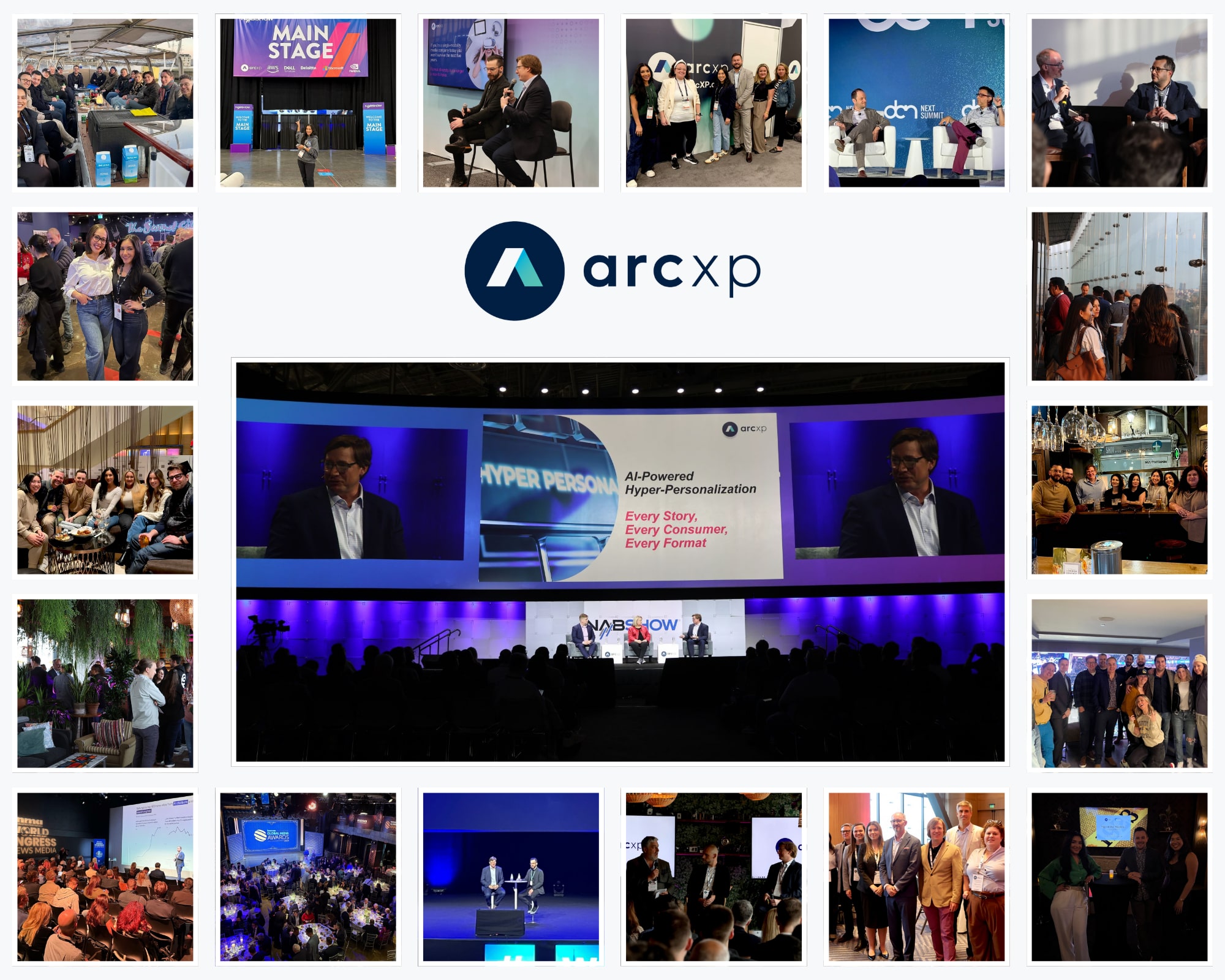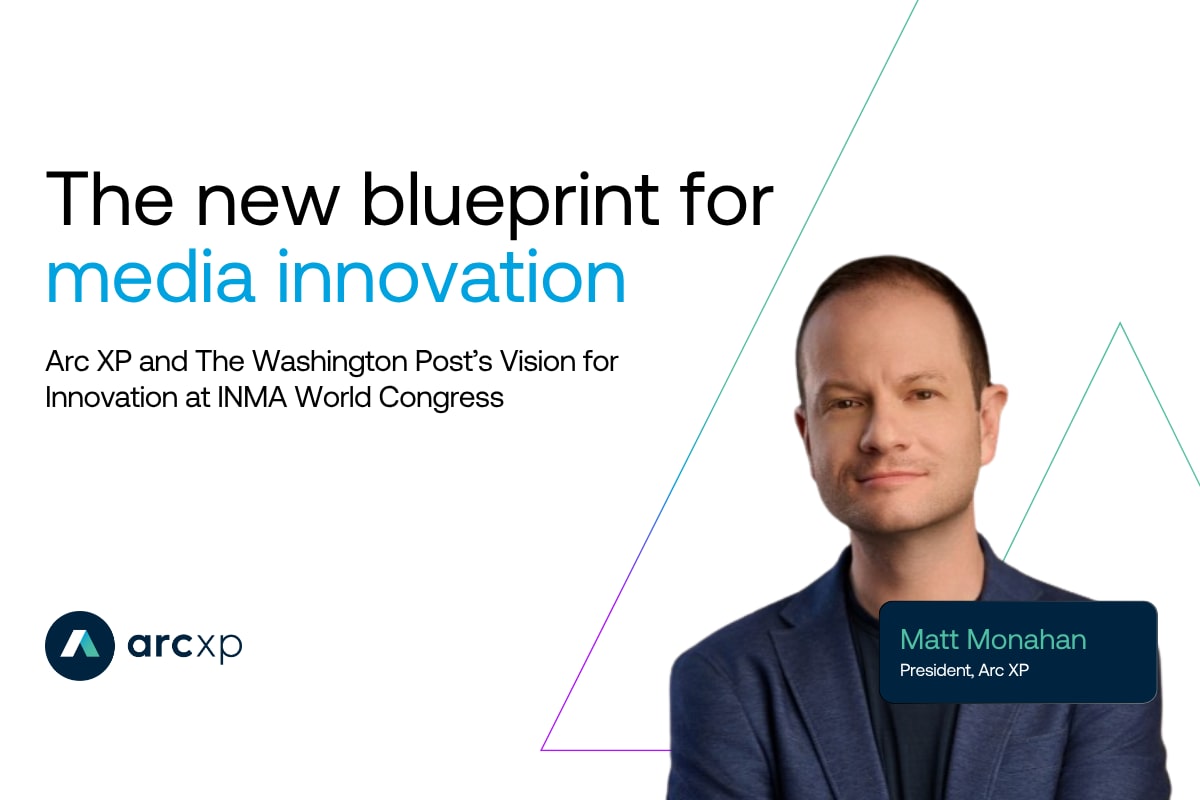What Would You Create with 20,000 New Journalists? Unlocking the Power of AI in Media

Imagine having access to a team of 20,000 new journalists—writers, videographers, editors—each contributing fresh content and ideas. It’s a question that feels almost fantastical, but AI is making this scale achievable. The future of media is not just about improving efficiency; it’s about unlocking new creative opportunities and capabilities that were once unimaginable.
The key question is no longer, “How do we do more with less?” but “What new opportunities could we create if scale weren’t a barrier?”
AI is poised to transform newsrooms by not only improving efficiency but also enabling entirely new ways of producing content. This was a central theme at Arc XP’s Connect London event, where industry experts discussed AI’s role in revolutionizing media—from automation to innovation.
The Two Key Areas of AI’s Value: Efficiency Gains and New Possibilities
At the heart of AI’s promise to the media industry lies its ability to deliver on two fronts:
- Efficiency Gains – Streamlining existing workflows and making operations more effective.
- New Possibilities – Creating entirely new opportunities that would be impossible without AI.
Moderated by Joey Marburger, VP of Arc Intelligence, the Connect London session featured industry experts Mark Watkins, Principal Solutions Architect at AWS, Venkatesh Varalu, VP of Data and Analytics at The Washington Post, David Caswell, Founder of StoryFlow Ltd., and Lars Adrian Giske, Head of AI at Mediehuset iTromsø. They shed light on how AI is already delivering on these promises and what the future holds.
AI in Media Today: Unlocking Efficiency to Free Up Time and Resources
AI is already impacting media organizations by automating time-consuming tasks, allowing journalists to focus on higher-value, creative work.
David outlined two phases of AI adoption in media:
- Phase One: Efficiency Through Automation In the early stages, AI automates repetitive tasks like headline generation, tagging, and translations. This saves time, maintains content quality, and frees up resources for more strategic work.
- Phase Two: Reshaping the Information Ecosystem David also pointed to a transformation beyond automation: “It’s not just about workflows; it’s about reshaping the entire information ecosystem.” AI is fundamentally changing how audiences engage with content, offering new ways for media organizations to rethink news delivery and consumption.
In this shift, AI doesn’t just automate workflows; it reshapes the entire editorial process. Lars pointed out that AI tools have already boosted data-driven research significantly, enabling journalists to discover stories that would have otherwise gone unnoticed. Similarly, AI-generated tags are speeding up content categorization and increasing accuracy, with Mark noting that these tools save both time and money compared to manual processes.
For tasks that are repetitive or require substantial resources, AI is indispensable. Venkatesh Varalu from The Washington Post shared how the newspaper uses AI to moderate millions of comments daily and process reader letters—turning some into publishable content. By automating these labor-intensive processes, AI enables journalists to focus on high-impact reporting, addressing one of the biggest challenges in modern newsrooms: doing more with fewer resources.
Through these AI-driven improvements, newsrooms are becoming more efficient, allowing them to produce high-quality content with reduced operational costs. This shift not only addresses the challenge of doing more with less but also lays the foundation for deeper transformation within the media landscape.
Pushing the Boundaries: AI’s Role in Creating New Possibilities
Beyond improving workflows, AI enables entirely new possibilities for content creation and audience engagement. Mark discussed how AI-driven personalization is transforming the consumer experience. Publishers are leveraging AI-powered chatbots, recommendation engines, and tailored content delivery to create richer, more dynamic interactions with their audiences. These innovations open new monetization channels, such as smarter subscription models and targeted content delivery, which deepen audience relationships and unlock revenue potential.
But perhaps the most exciting aspect of AI in media is its ability to unlock opportunities that were previously beyond reach. Imagine having the equivalent of 20,000 journalists at your disposal. What could be created? What new types of content, stories, or consumer experiences could emerge?
As AI continues to evolve, media organizations—whether large or small—can undertake ambitious projects with significantly reduced risk. This new era of AI democratizes access, enabling even smaller newsrooms to undertake ambitious projects, test innovative ideas, and learn from failures without requiring massive investments. According to David, the key to success isn’t capital but creativity: “You don’t need to invest millions; you need to invest creativity and imagination. That’s the new scarce resource in this era.”
The Business Case for Targeted AI Deployment
While AI presents tremendous potential, its value comes from careful and strategic investment. Joey highlighted the importance of identifying areas where AI delivers the greatest return—whether through improving operational efficiencies, enhancing storytelling, or personalizing audience experiences. While tools like ChatGPT are affordable and accessible, more advanced AI implementations require significant resources, making it crucial for media organizations to focus on the most impactful opportunities.
Venkatesh shared a straightforward approach to AI deployment: “If something works well, leave it alone. Focus AI on areas with opportunities for improvement or tasks no one wants to handle.” This mindset shifts AI from a blanket solution to a targeted tool. He emphasized two key areas for AI application:
- Outmatched Areas: AI should replace manual processes that are inefficient or ineffective. For example, traditional paywalls can be upgraded with smart metering systems powered by deep learning, offering better performance, especially when competing with larger ecosystems like search engines.
- Tedious Tasks: AI can tackle repetitive, time-consuming jobs, such as moderating comments or processing reader letters. At The Washington Post, AI is being used to automate these tasks, saving valuable time and resources.
As AI continues to evolve, media organizations must think beyond incremental improvements and focus on the transformative possibilities it offers. Those who do will lead the next chapter of innovation in the industry.
Predictions for 2025 and Beyond
The panelists did not shy away from making bold predictions for the future. Lars pointed to the potential for AI to empower smaller newsrooms, enabling them to conduct investigative journalism that was once beyond their capacity. AI tools that can analyze vast amounts of public data, rank it by newsworthiness, and summarize key points are already being rolled out in smaller markets, creating new opportunities for local journalism.
Venkatesh took the conversation in a more philosophical direction, imagining a future where AI could achieve “digital immortality” by preserving an individual’s thoughts, decisions, and behaviors. He described AI agents that learn from daily interactions—emails, calls, and meetings—capturing context and reactions to create a digital version of a person. This digital self could continue to offer insights and guidance long after someone is gone, allowing future generations to interact with that “digital self.”
“We are living in an age where creating a digital self and achieving immortality is within reach. It’s an incredible possibility—AI can enable us all to live on forever,” said Venkatesh. While these ideas extend beyond media, they highlight AI’s transformative potential—not just for industries, but for redefining human existence itself.
The Road Ahead for Media and Publishing Organizations
As AI continues to evolve, its potential to reshape media and publishing is undeniable. AI can give newsrooms and media companies the tools to scale operations, enhance creativity, and generate new experiences, but it is the innovative thinkers who will drive these opportunities forward.
The future of AI in media is bright for those who embrace it not just as a tool for efficiency but as a means to unlock new possibilities for storytelling, engagement, and audience connection. The next chapter of innovation in media will belong to those who dare to dream beyond traditional boundaries and harness AI’s full potential.
Recent resources





